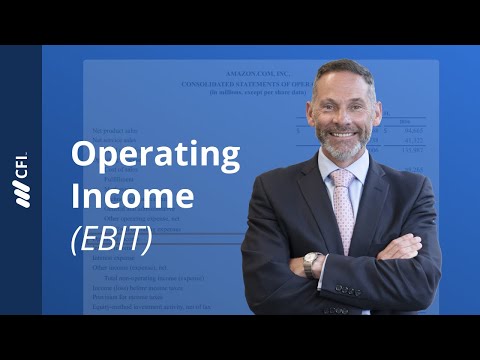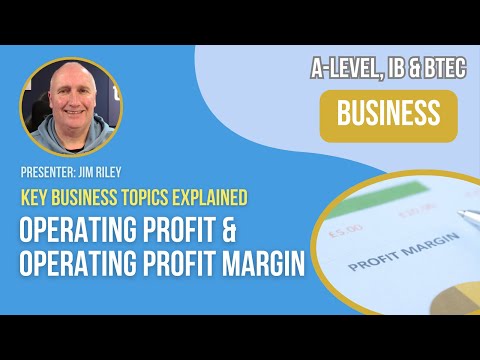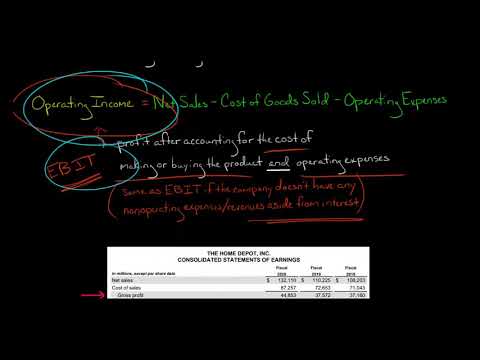Lightbulb Moments: How to Find Operating Income and Why It’s Vital
When it comes to the world of business, operating income is akin to the familiar shine of a hair barrette, often overlooked but absolutely vital in holding everything together. Now, you might be wondering how to find operating income and why it is so essential. Simply put, operating income is the pulse that reveals a glimpse of a company’s heart – its profitability.
Date it down to your bottom dollar; grasping operating income is crucial to understanding and assessing the financial health of any business, whether you’re a stakeholder, an investor, or an entrepreneur. The good news is that finding operating income is not as daunting as it might initially seem. Think of it like a well-orchestrated back And shoulder workout, requiring precision, understanding, and the right steps.

Breaking Down the Basics: What is Operating Income?
Just like you wouldn’t embark on a new workout plan without understanding the basics, you shouldn’t dabble in business finances without understanding the fundamentals. So, what exactly is operating income?
In essence, operating income reflects a company’s core business profitability before any extraordinary income or expenses. But don’t get side-tracked by the term “extraordinary”- these are just income or expenses that are infrequent or unusual. It’s the nitty-gritty, the daily grind of making and selling products or services, minus the costs of doing so (excluding interest and tax). In other words, it sits comfortably in the sweet spot between gross income and net income.

Understanding the Intricacies: Operating Income vs Net Income
Now, talking about operating income and net income, it’s easy for the two to tangle up like a pair of earbuds in your pocket. Sure, they’re related – they’re both about profitability after all. But they are as distinct as chalk and cheese.
To put it simply, operating income looks at profits from regular business operations, ignoring the cost of interest and taxes (think of this as your gross income from a good cap rate), whereas net income includes all revenues and all expenses, including taxes, interest, and those “extraordinary” items we mentioned earlier.
The Power of Precision: The Operating Income Formula
Finding operating income is a lot like following that wholesome recipe; it requires precision and the right ingredients. So strap yourself in, and let’s break down the operating income formula.
In its most basic form, the formula reads like this:
Operating income = Gross income − Operating expenses
By following this “recipe” carefully, you will clearly see the profitability of a company’s core business operations, without any income or expenses that don’t come from the regular operations muddying the waters. Simplicity and clarity, that’s the aim of the game.

Ask and You Shall Receive: What is an Example of Operating Income?
Learning is best done with examples, right? So, let’s buckle down and explore a real-world scenario of how to find operating income, using a fictional company, ABC.
Let’s assume that in the current fiscal year, company ABC earned sales revenue worth $350,000. For the same period, the cost of goods sold was $50,000, rent was $15,000, maintenance fees were $3,000, insurance was at $5,000, and employee net pay was $50,000.
Following our trusty operating income formula:
Operating income = Gross income − Operating expenses
We find that the operating income of the business is $227,000. Now, that’s a profit to write home about!
From Company Coffers to Your Pocket: How to Calculate Operating Cost on an Income Statement
Operating costs form an integral part of our earlier formula. These are the costs a business incurs through its normal business operations. Often included in these costs are things like rent, equipment, supplies, insurance, and employee salaries.
So, how do you calculate these costs on an income statement?
Begin by identifying all the costs directly associated with routine business operations. Next, tally up these costs. Simple as that!

The Path to Profit: Operating Profit and Its Formula
Operating profit adds another layer to our understanding of a business’s profitability. It includes not only the costs of goods sold (COGS) but all other costs associated with running the business.
The operating profit formula is as follows:
Operating profit = Gross profit - operating expenses + operating income
It offers a little more depth than just operating income, making it another valuable tool in our financial toolkit.
Getting the Whole Picture: What is total operating income?
This takes us to ‘total operating income.’ This is the pre-tax profit a company has after subtracting all costs and expenses from total revenue. This differs from operating income as it includes ALL forms of income, not only that from primary business activities.

Numbers Never Lie: How Do You Calculate Operating Income or EBIT?
EBIT, or Earnings Before Interest and Taxes, is a keen companion to operating income. Also known as operating earnings, operating profit, or operating income, it’s another vital part of the financial landscape.
You calculate EBIT in the same way you calculate operating income; as it stands for operating income itself!
Reinforcing Success: Key Takeaways
As we wrap things up, let’s hit our keynotes again:
When properly understood, these concepts provide a clear picture of a company’s financial health, just as the Noi formula presents a view of a real estate venture’s profitability.

Illuminating Finances: Unlocking the Secrets of Operating Income
In the world of finance, knowledge really is power, and understanding how to find operating income throws open doors to better business insight and smarter investment decisions. And that, my friends, is the true secret of operating income.
To dive even deeper into these financial waters, take a look at understanding what NOI is in real estate. The world of business finance is a fascinating journey; every bit of knowledge you pick up equips you better for the pathway to success.
Happy learning, and remember: numbers don’t lie, they illuminate.



